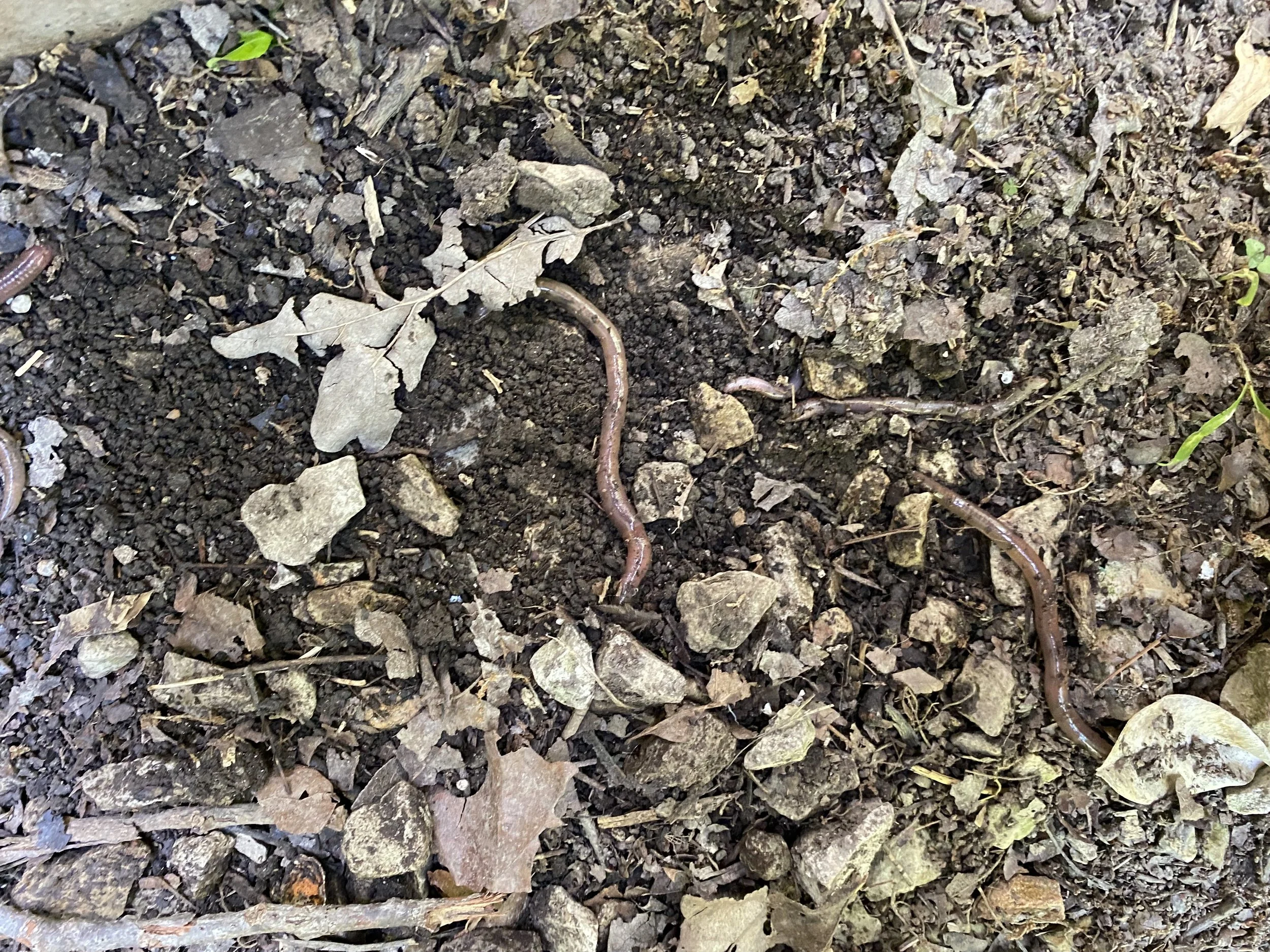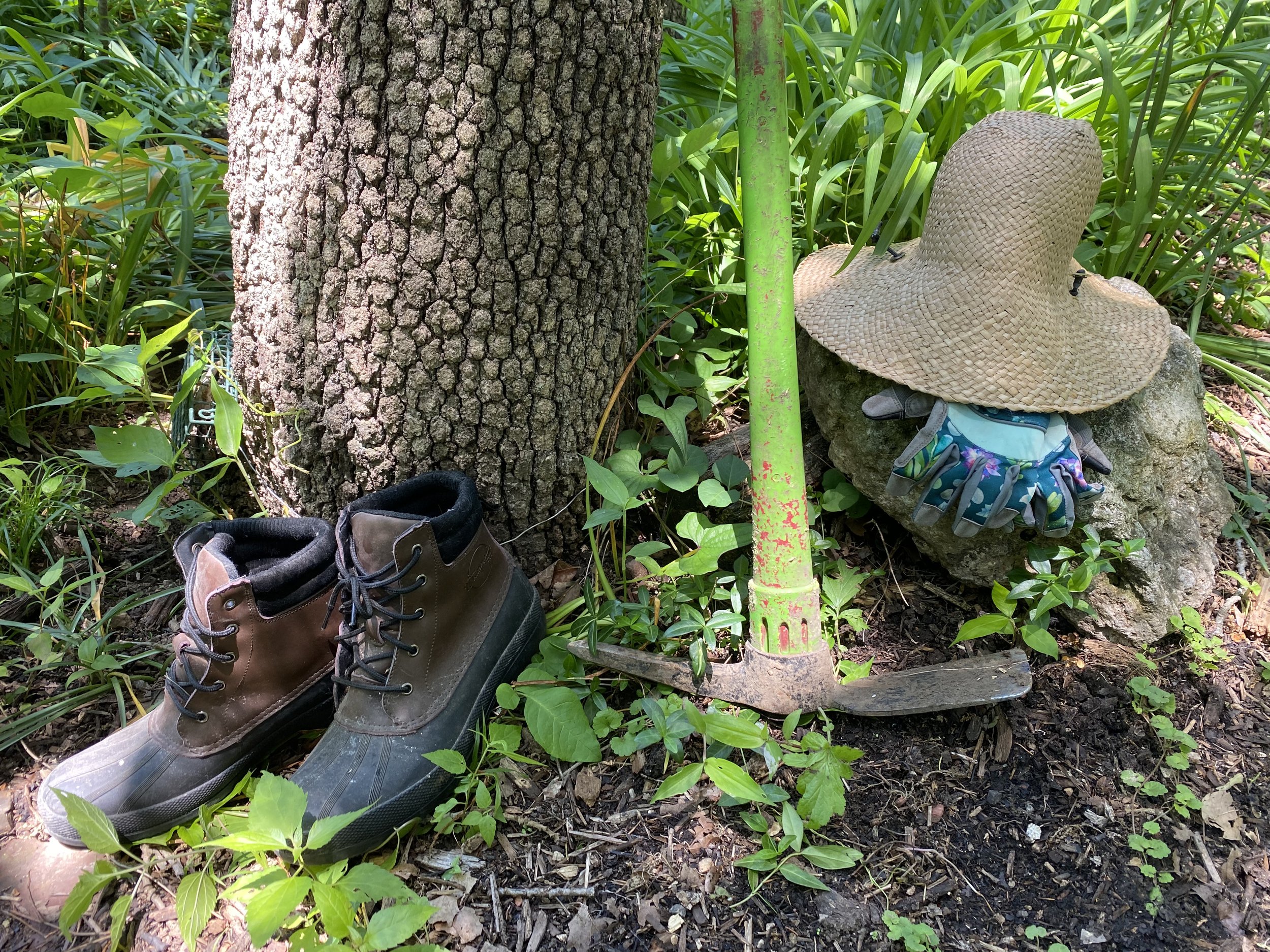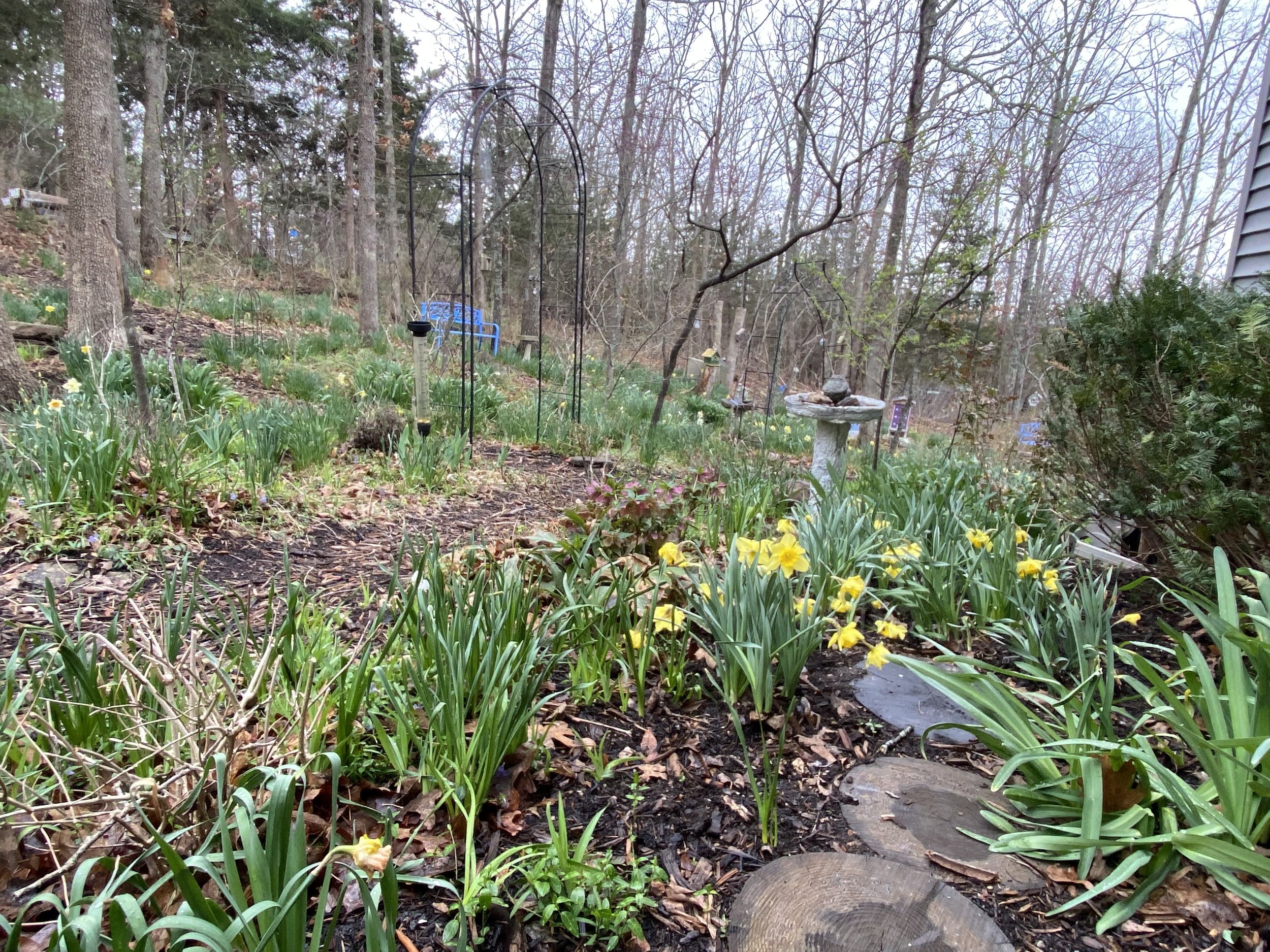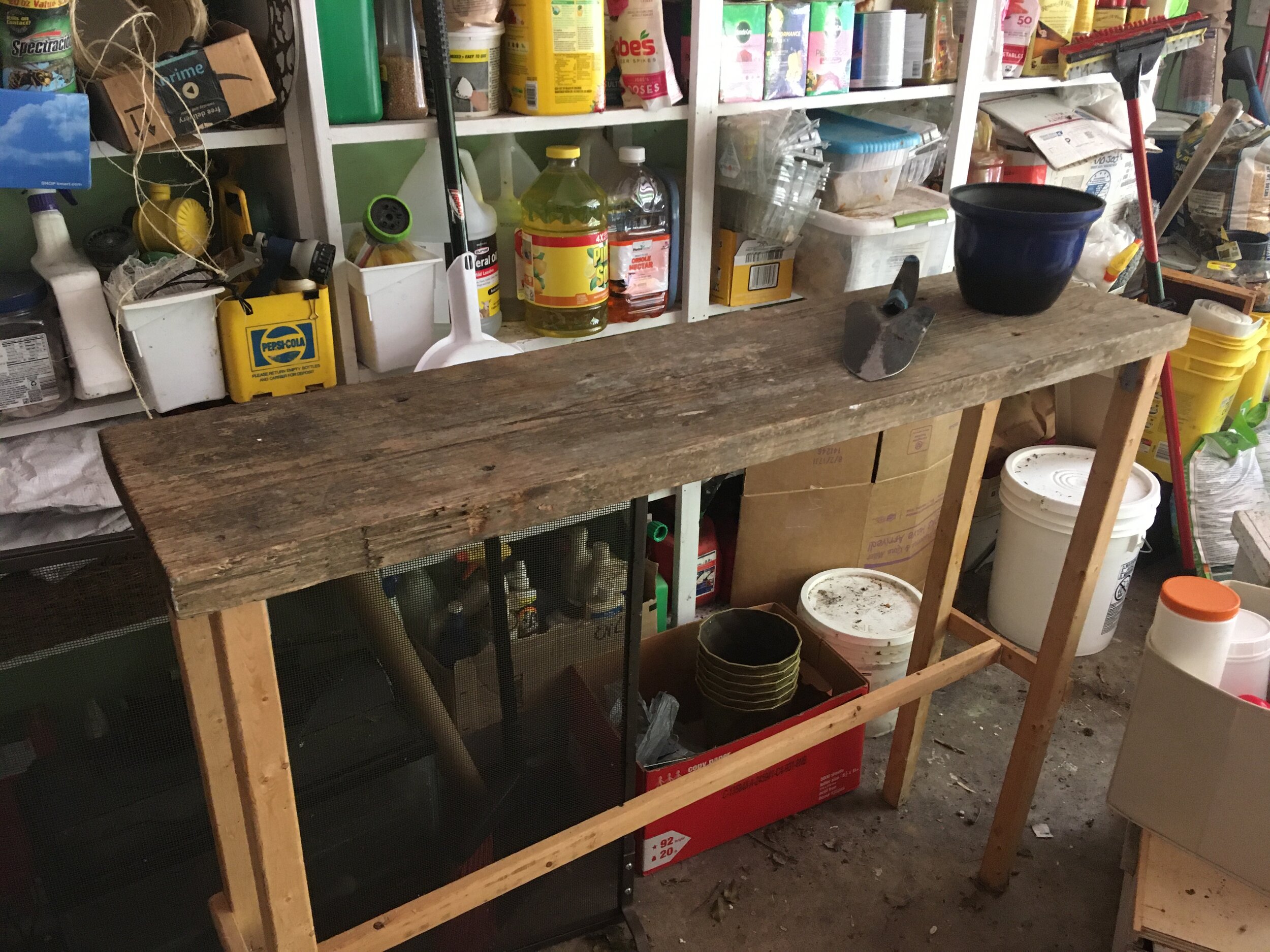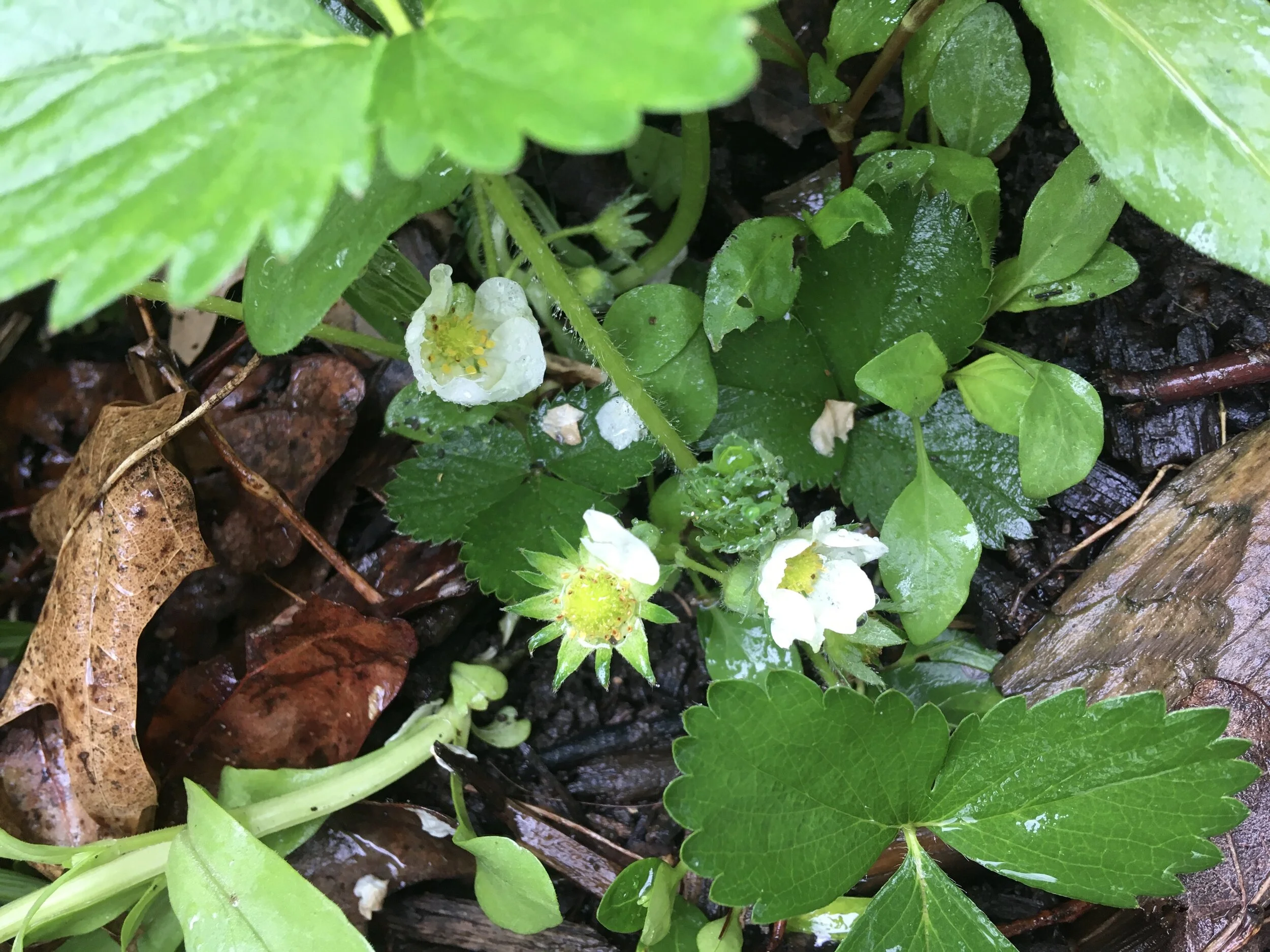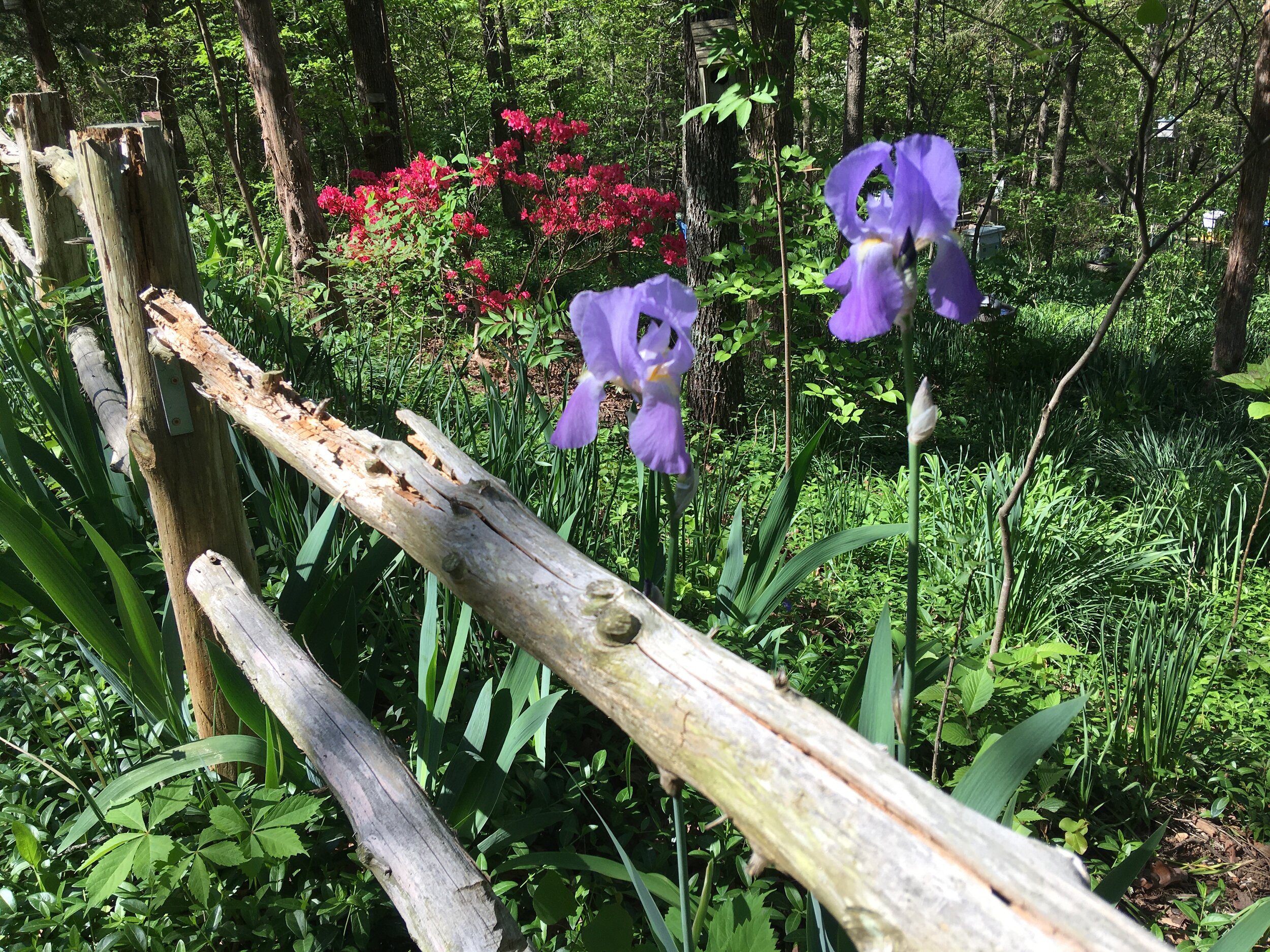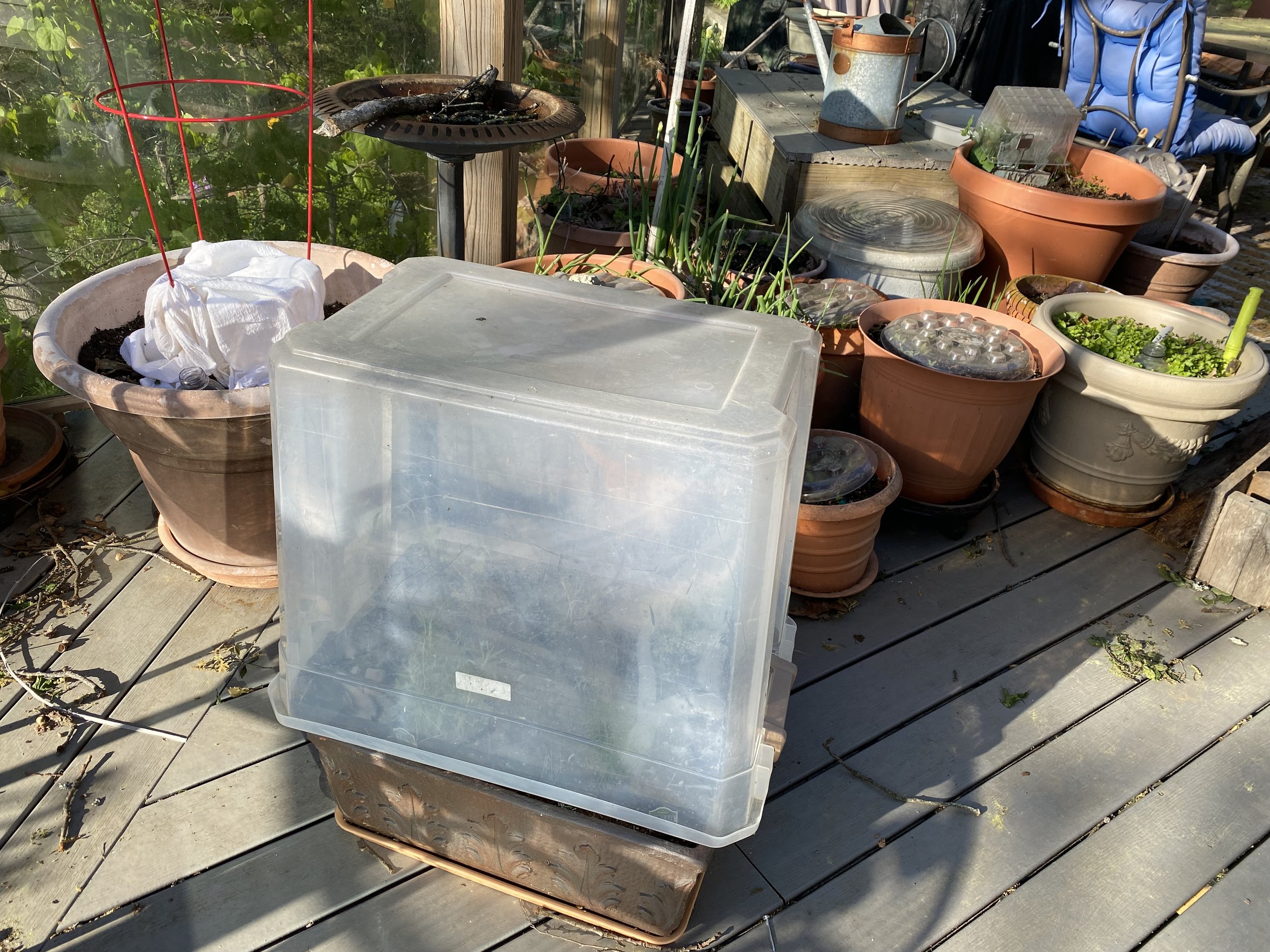Jumping Worms v. Earthworms
Jumping worms are often mistaken for earthworms. If you’ve spent any time digging up earthworms for fishing, you know earthworms don’t jump around as fast as jumping worms. The band about an inch from their tip has ridges and doesn’t encircle them. Earthworms also live deeper in the soil, some 5 inches or so.
Jumping worms are drier than common native earthworms. They could also have an iridescent sheen to them, and darker on the top and lighter on the bottom.
Missouri’s earthworms and jumping worms both have a clitellum which is like a collar behind their head. The earthworms’ clitellum is thick and stands out, encircling part of the body while jumping worms’ clitellum is smooth, the same size as the body and encircles the whole the body.
Jumping worms’ also drop their tails when caught.
Damage to Ecosystem
Mo. Department of Conservation notes “Invasive jumping worms consume more soil nutrients than other earthworms, meaning that they actually deplete the soil of nutrients, rendering the soil less fertile for plants; and without plants, the soil is more likely to erode. Where a large population of these worms is established, the soil surface looks dry and granular, like coffee grounds or cooked up ground beef. Leaf litter disappears.
Invasive jumping worms damage forest ecosystems by rapidly eating up the leaf litter that usually protects forest topsoils. Without that mulchlike layer, the bare soil dries rapidly and is subject to erosion. Young forest plants have a difficult time getting established. The soil chemistry changes, and the soil’s microbial communities (bacterial, fungi, and other microbes) change as well. The amount of mycorrhizal fungi (which attach to plant roots in a symbiotic relationship) declines, making it harder for trees to take in nutrients.
Without the protective layer of leaf litter, many invertebrates (other worms, millipedes, centipedes, springtails, arachnids, and countless types of insects), plus amphibians, reptiles, small mammals, and ground-nesting birds, lose important habitat. Thus species diversity declines and forest food chains are disrupted.”
Removing Jumping Worms
Once I confirmed these were jumping worms, I dug up all I could find in the leaf litter over the gravel by my garage door. They were placed in a plastic bag and left in the sun to die. They were then added to my compost.
I’ve spent decades building up and keeping what little soil I have on this hillside healthy and enriched. I don’t need jumping worms destroying all of those years of caring for soil.
For more gardening, beekeeping, cooking and easy home decor tips, subscribe to Garden Notes.
Charlotte






